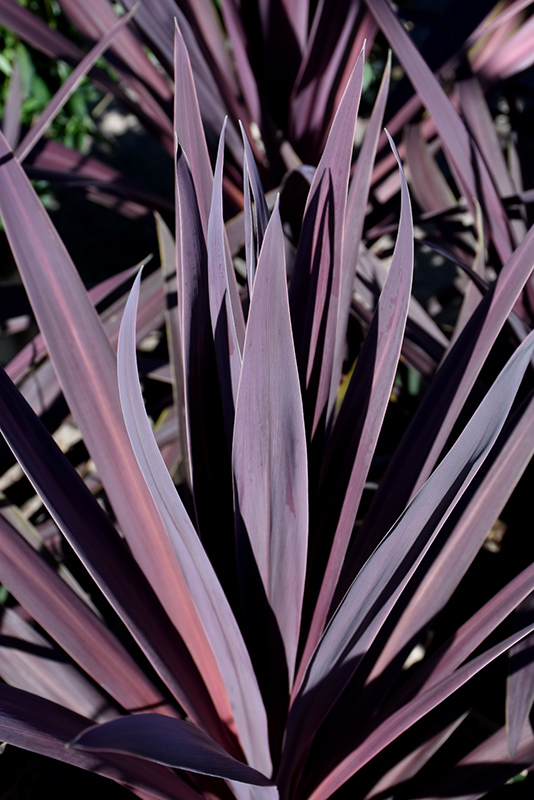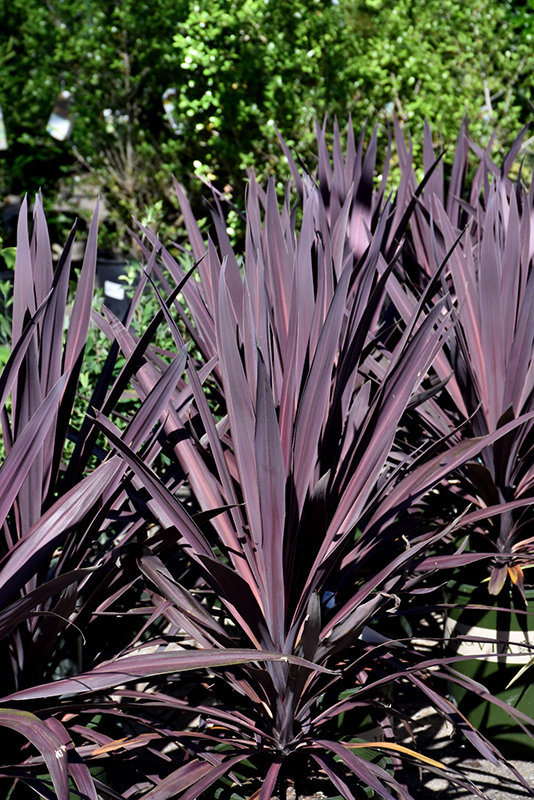Height: 10 feet
Spread: 5 feet
Sunlight:
![]()
![]()
Hardiness Zone: 7b
Other Names: False Dracaena
Description:
Slender trunks feature 5 ft. wide burgundy-red, sword like foliage; eye-catching in poolside planters, containers, or garden beds; heat and drought tolerance once established; fragrant, white panicles bloom in early summer; adaptable as houseplant
Ornamental Features
Bauer's Cordyline is primarily valued in the landscape or garden for its ornamental upright and spreading habit of growth. It has attractive burgundy evergreen foliage. The sword-like leaves are highly ornamental and remain burgundy throughout the winter.
Landscape Attributes
Bauer's Cordyline is an open multi-stemmed evergreen shrub with an upright spreading habit of growth. Its relatively coarse texture can be used to stand it apart from other landscape plants with finer foliage.
This shrub will require occasional maintenance and upkeep, and should never be pruned except to remove any dieback, as it tends not to take pruning well. It has no significant negative characteristics.
Bauer's Cordyline is recommended for the following landscape applications;
- Accent
- Mass Planting
- General Garden Use
- Container Planting
Planting & Growing
Bauer's Cordyline will grow to be about 10 feet tall at maturity, with a spread of 5 feet. It tends to be a little leggy, with a typical clearance of 3 feet from the ground, and is suitable for planting under power lines. It grows at a medium rate, and under ideal conditions can be expected to live for approximately 10 years.
This shrub does best in full sun to partial shade. It does best in average to evenly moist conditions, but will not tolerate standing water. It is not particular as to soil type or pH, and is able to handle environmental salt. It is somewhat tolerant of urban pollution. This particular variety is an interspecific hybrid.
Bauer's Cordyline makes a fine choice for the outdoor landscape, but it is also well-suited for use in outdoor pots and containers. Its large size and upright habit of growth lend it for use as a solitary accent, or in a composition surrounded by smaller plants around the base and those that spill over the edges. It is even sizeable enough that it can be grown alone in a suitable container. Note that when grown in a container, it may not perform exactly as indicated on the tag - this is to be expected. Also note that when growing plants in outdoor containers and baskets, they may require more frequent waterings than they would in the yard or garden.
This plant is not reliably hardy in our region, and certain restrictions may apply; contact the store for more information.


